As the crisp autumn air sets in, I find my thoughts drifting to the tantalizing aromas and thinly sliced meats of my favorite Japanese hot pot dish – shabu shabu. Vivid memories come flooding back of the first time I tasted this delicate beef broth with paper-thin slices of tender wagyu beef while backpacking through Tokyo years ago. With the very first piece placed into my mouth with chopsticks, then swished gently in the simmering broth, I was transported – not only by the wonderfully tender and flavorful beef, but by the joyful chatter and warmth shared around the table.
Even now, my mouth waters just picturing that beautiful rosy slice of marbled beef before it melts away into the light dashi broth. I’ve tried countless times over the years to recreate the magic of that bustling Shinjuku shabu shabu restaurant, hoping to honor their time-perfected preparation. But today, I feel newly inspired to try once more to capture the nostalgic essence of the dish that still makes my tastebuds tingle and my heart full.
As I gather my ingredients – wafer-thin wagyu or ribeye, nappa cabbage, fresh shiitake mushrooms, silky tofu – tender memories flood back, filling me with the same childlike wonder and anticipation for this refined yet friendly hot pot dish. I hope to respectfully capture just a touch of the soulful magic I experienced over this Japanese sukiyaki so many years ago.
Stay tuned for my full “Beef Shabu Shabu” recipe coming soon to Food and Meal! This nostalgic, craveable dish is sure to warm you up with mouthwatering thin-sliced beef.
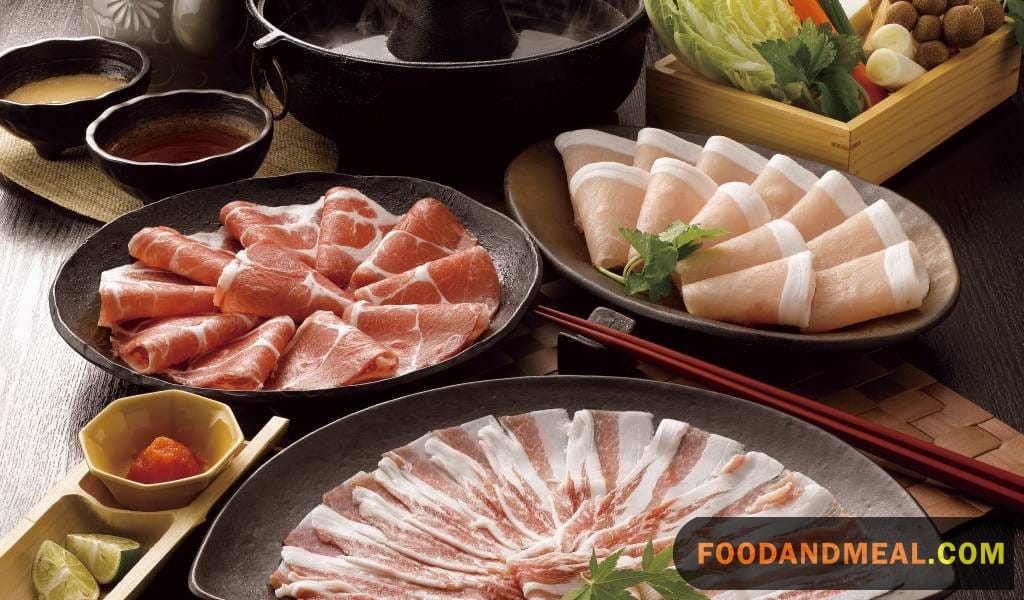
Beef Shabu Shabu Recipe
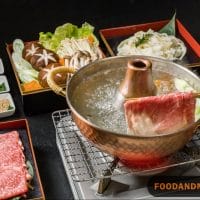
Japanese Beef Shabu Shabu
Equipment

Ingredients
Instructions
- Fill large sized pot in middle of table 2/3 full of boiling water. Add kombu seaweed. Allow it to soak for about 1⁄2 hour.

- While seaweed soaks, cut up veggies and meat into thin, small slices. Dice tofu into small sized cubes.

- Return seaweed to boil. Remove it right before the water begins to boil.

- Gather family and friends around the table. Allow them to dip the slices of meat and veggies in communal pot to cook. Provide individual bowls so they can customize their own dinner, and dipping sauces so they can dip as they eat.

Video
Notes
Nutrition
© Food And Meal
This website provides approximate nutrition information for convenience and as a courtesy only. Nutrition data is gathered primarily from the Spoonacular Database, whenever available, or otherwise other online calculators.
Beef Shabu Shabu Using a Slow Cooker
To prepare a delicious Shabu Shabu meal, meticulous attention to detail is key. Start by thinly slicing beef, chopping assorted vegetables, and having dipping sauces ready. The broth begins with soaking kombu in about 6 cups of water in a slow cooker for 30 minutes. Once bubbles form, remove kombu, add a splash of sake, and set the slow cooker to ‘low.’
Simmer with firm vegetables first, then introduce tofu and leafy vegetables. The magic happens with thinly sliced beef layered 15 minutes before serving, cooking gently with residual heat.
Serve Shabu Shabu in bowls with a mix of veggies, tofu, and succulent beef. Accompany with prepared dipping sauces and steamed rice for a complete and satisfying experience. Enjoy the rich flavors and communal spirit of Shabu Shabu!
Cooking Tips
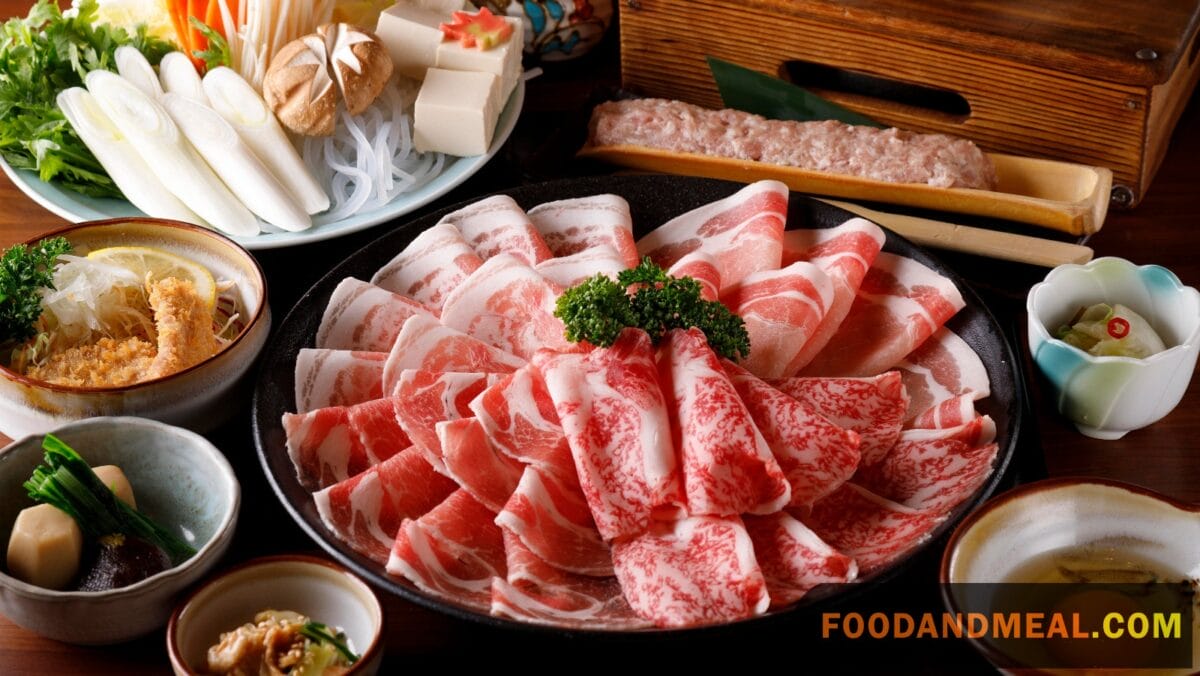
As I prepare my nostalgic Beef Shabu Shabu, tender memories of my backpacking adventure in Japan flood my mind. I fondly recall the cozy Shinjuku restaurant where I first tasted this refined hot pot dish years ago.
I lovingly select the freshest thin-sliced beef and vegetables like enoki mushrooms, baby bok choy and tofu. My heart swells as I create the light dashi broth, infused with warm spices and sweet sake.
While cooking, I gently swish the paper-thin slices through the simmering broth to achieve the signature velvety texture without overcooking. I beam with pride seeing the beautiful rosy beef cook to perfection.
I artfully arrange ingredients in the bubbling pot and sprinkle on fresh garnishes like green onion and shredded nori. My mouth waters taking in this elegant, yet comforting dish.
Serving Suggestions
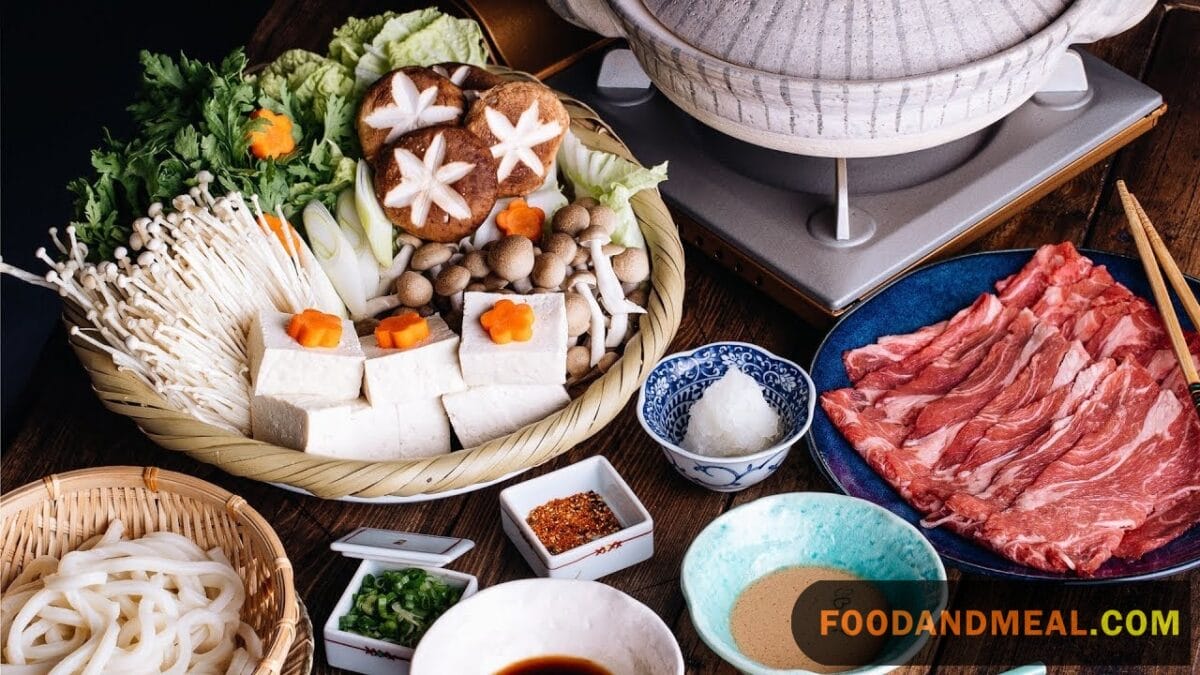
Begin your meal with the subtle and clear broth of Shabu Shabu, complemented by the bold and spicy notes of Shio Tantanmen. The rich and zesty Veal Gremolata serves as a perfect side, elevating the overall dining experience.
For a sweet conclusion, indulge in the fruity goodness of Cherry Cobbler, creating a harmonious balance with the savory tones of the Shabu Shabu. If you’re in the mood for a surf-and-turf fusion, Teriyaki Shrimp provides a succulent and sweet counterpart to the thinly sliced beef.
Enhance your protein intake by adding Soy Sauce Eggs to your Shabu Shabu, allowing the eggs to absorb the flavorful broth. For a spicy kick and satisfying crunch, introduce Scallion Kimchi into the mix, adding an extra layer of excitement to your Shabu Shabu adventure.
Customize your meal with these thoughtful pairings, creating a diverse and harmonious blend of flavors that will leave your taste buds delighted.
FAQs of Beef Shabu Shabu
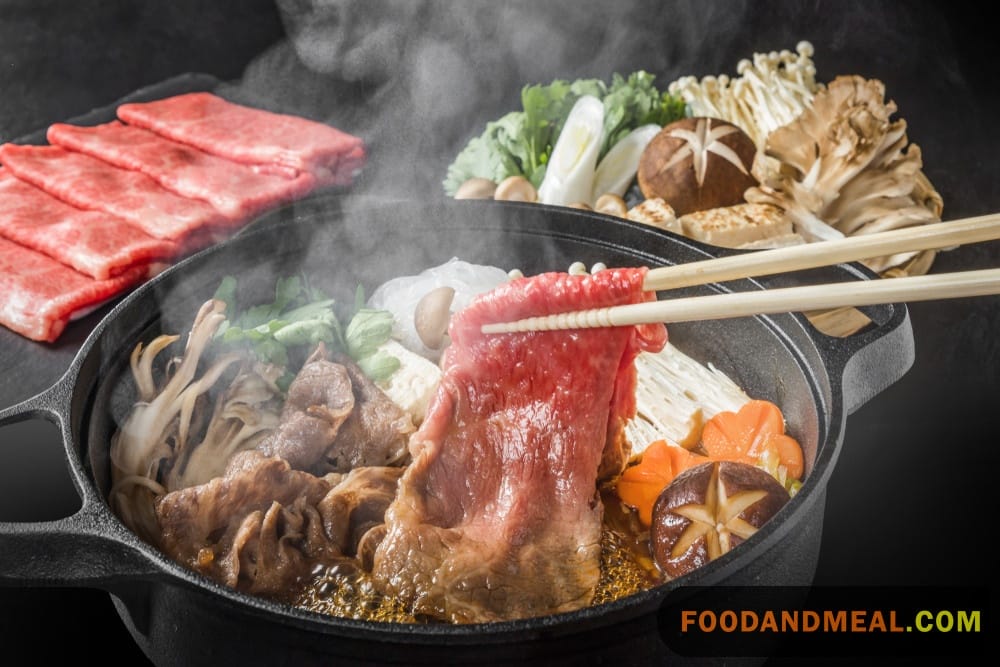
- What is Shabu Shabu beef? Shabu Shabu beef refers to thinly sliced, high-quality beef specifically prepared for the Japanese hot pot dish known as Shabu Shabu. The term “Shabu Shabu” itself denotes the swishing or “swirling” motion of the thinly sliced meat in the hot broth.
- Is Shabu Shabu beef healthy? Yes, Shabu Shabu beef can be a healthy option. The dish typically involves cooking lean slices of beef in a broth along with a variety of vegetables. It is low in fat, and the method of preparation allows for better control over portion sizes.
- Is Shabu Shabu beef tender? Yes, Shabu Shabu beef is known for its tenderness. The thinly sliced beef cooks quickly in the hot broth, resulting in a delicate and melt-in-the-mouth texture. The quality of the meat and the slicing technique contribute to its tenderness.
- What is the difference between Shabu Shabu and Sukiyaki beef? While both Shabu Shabu and Sukiyaki involve thinly sliced beef, there are notable differences. Shabu Shabu beef is dipped briefly into hot broth, remaining relatively raw, while Sukiyaki beef is cooked slowly in a sweet and savory soy-based broth. Additionally, Shabu Shabu often uses a ponzu or sesame-based dipping sauce, while Sukiyaki is typically enjoyed with a raw egg-based dipping sauce.
- How thin should the beef be for Shabu Shabu?
The thinner, the better! Ideally, beef slices should be almost see-through. Many specialized butchers or Asian grocery stores offer beef pre-sliced for Shabu Shabu. - Can I use a different meat instead of beef?
Absolutely! While beef is traditional, you can use pork, chicken, or even seafood. Adjust the cooking time accordingly, especially for chicken. - Is there a vegetarian version of Shabu Shabu?
Yes, you can omit the meat and use a medley of mushrooms, tofu, and a variety of veggies. Replace the beef broth with a rich vegetable or mushroom broth. - How do I store leftovers?
Transfer any leftovers into an airtight container, ensuring the broth covers the ingredients. This will keep everything moist. Store in the refrigerator and consume within 2-3 days. For reheating, gently simmer on the stove until warmed through. - Is Shabu Shabu gluten-free?
The primary ingredients are gluten-free. However, be cautious with the dipping sauces, especially soy sauce. Always check labels or use tamari as a gluten-free alternative.
Conclusion
In conclusion, recreating the magic of that little Mexican abuelita’s arroz rojo has been a delicious walk down memory lane, taking me back to the sights, sounds and spicy flavors of rural Mexico. While my amateur recipe likely doesn’t yet capture the soulful essence I experienced years ago, I’m excited to continue honing it with guidance from more seasoned cooks.
I hope you’ll gather some fiery foodie friends this autumn to bask in the smoky warmth of this Spicy Chicken Chili Pepper Hot Pot. Be sure to visit Food and Meal for the full recipe, as well as other nostalgic comfort dishes perfect for sharing smiles, sweat and memories around a steaming pot.
Hi! I'm Nazia of ‘Nazia Cooks’, a self-taught baker and cook residing in Chennai. Rooted in the rich South Indian culinary landscape, my palate has expanded to embrace global flavors. I revel in crafting fusion dishes, melding traditions to birth unique tastes.





